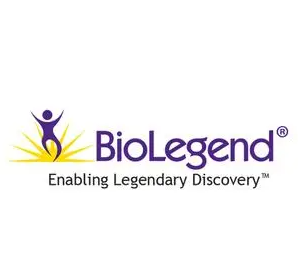PerCP/Cyanine5.5 anti-human CD8a Antibody
- 产品名称:
- PerCP/Cyanine5.5 anti-human CD8a Antibody
- 产品类别:
- 抗体
- 产品编号:
- 301031
- 产品应用:
- 301031
[价格]
| 规格 |
价格 |
库存 |
| 25tests |
¥ 1568 |
1 |
- Verified Reactivity
- Human, Cynomolgus, Rhesus
- Reported Reactivity
- Chimpanzee, Baboon, Pigtailed Macaque, Sooty Mangabey
- Antibody Type
- Monoclonal
- Host Species
- Mouse
- Formulation
- Phosphate-buffered solution, pH 7.2, containing 0.09% sodium azide and BSA (origin USA)
- Preparation
- The antibody was purified by affinity chromatography, and conjugated with PerCP/Cyanine5.5 under optimal conditions.
- Concentration
- Lot-specific (to obtain lot-specific concentration, please enter the lot number in our Concentration and Expiration Lookup or Certificate of Analysis online tools.)
- Storage & Handling
- The antibody solution should be stored undiluted between 2°C and 8°C, and protected from prolonged exposure to light. Do not freeze.
- Application
-
FC - Quality tested
- Recommended Usage
Each lot of this antibody is quality control tested by immunofluorescent staining with flow cytometric analysis. For flow cytometric staining, the suggested use of this reagent is 5 ?l per million cells in 100 ?l staining volume or 5 ?l per 100 ?l of whole blood.
* PerCP/Cyanine5.5 has a maximum absorption of 482 nm and a maximum emission of 690 nm.
- Excitation Laser
- Blue Laser (488 nm)
Green Laser (532 nm)/Yellow-Green Laser (561 nm)
- Application Notes
The RPA-T8 antibody does not block the binding of HIT8a antibody to CD8a. Additional reported applications of this antibody (for the relevant formats) include: immunohistochemical staining of paraformaldehyde-fixed frozen sections3 and costimulation of T cell responses4. This clone was tested in-house and does not work on formalin fixed paraffin-embedded (FFPE) tissue. The Ultra-LEAF? purified antibody (Endotoxin <0.1 EU/?g, Azide-Free, 0.2 ?m filtered) is recommended for functional assays (Cat. Nos. 301073 & 301074).
- Additional Product Notes
- BioLegend is in the process of converting the name PerCP/Cy5.5 to PerCP/Cyanine5.5. The dye molecule remains the same, so you should expect the same quality and performance from our PerCP/Cyanine5.5 products. Contact Technical Service if you have any questions.
- Application References
(PubMed link indicates BioLegend citation) -
- Knapp W, et al. Eds. 1989. Leucocyte Typing IV. Oxford University Press. New York.
- Schlossman S, et al. Eds. 1995. Leucocyte Typing V. Oxford University Press. New York.
- Mack CL, et al. 2004. Pediatr. Res. 56:79. (IHC)
- Magidovich E, et al. 2007. P. Natl. Acad. Sci. USA 104:13022.
- Thakarl D, et al. 2008.J. immunol. 180:7431. PubMed
- Kmieciak M, et al. 2009. J. Transl. Med. 7:89. (FC) PubMed
- Thakral D, et al. 2008. J. Immunol. 180:7431. (FC) PubMed
- Yoshino N, et al. 2000. Exp. Anim. (Tokyo) 49:97. (FC)
- Rout N, et al. 2010. PLoS One 5:e9787. (FC)
- Stoeckius M, et al. 2017. Nat. Methods. 14:865. (PG)
- Product Citations
-
- Li M, et al. 2021. J Clin Invest. 131:. PubMed
- Kim MY, et al. 2021. JCI Insight. 6:. PubMed
- Straetemans T, et al. 2015. Clin Cancer Res. 21: 3957-3968. PubMed
- Hoang TN, et al. 2021. Cell. 184:460. PubMed
- Want MY, et al. 2019. Oncoimmunology. 8:e1586042. PubMed
- Swadling L, et al. 2020. Cell Rep. 30:687. PubMed
- Vinogradova EV, et al. 2021. STAR Protoc. 2:100458. PubMed
- Wildner NH, et al. 2022. Front Immunol. 13:886646. PubMed
- Acharya N, et al. 2020. Immunity. 53(3):658-671.e6. PubMed
- Nixon CC, et al. 2020. Cell Reports Medicine. 578(7793):160-165. PubMed
- Ogishi M, et al. 2021. Nat Med. 27:1646. PubMed
- Janssen A, et al. 2020. Cancer Immunol Res. 530:8. PubMed
- Vyborova A, et al. 2022. Front Immunol. 13:915366. PubMed
- Herter JM, et al. 2022. Strahlenther Onkol. Online ahead of print. PubMed
- Hoang TN, et al. 2020. bioRxiv. . PubMed
- Smith AS, et al. 2022. J Immunother Cancer. 10:. PubMed
- Court AC, et al. 2020. EMBO Rep. 21:e48052. PubMed
- Mu Z, et al. 2021. Genome Biol. 122:22. PubMed
- Leone D, et al. 2016. PLoS One. 11: 0151674. PubMed
- Smith CM, et al. 2021. Biochem J. 478:3331. PubMed
- Kacherovsky N, et al. 2019. Nat Biomed Eng. 0.66875. PubMed
- Whitfield SJC, et al. 2017. J Immunol. 198:3989. PubMed
- Huber JE, et al. 2020. J Immunol. 204:1101. PubMed
- Li N, et al. 2021. Cell Rep Med. 2:100297. PubMed
- Vinogradova EV, et al. 2020. Cell. 182(4):1009-1026.e29. PubMed
- Gorman JA, et al. 2019. Front Immunol. 10:44. PubMed
- Wilgenburg B, et al. 2016. Nat Commun. 7:11653. PubMed
- Iio K, et al. 2019. Sci Rep. 9:813. PubMed
- Cui J, et al. 2019. Neuro Oncol. 21:1436. PubMed
- Su Y, et al. 2021. Cancers (Basel). 13:. PubMed
- Kerdidani D, et al. 2022. J Exp Med. 219:. PubMed
- RRID
- AB_893426 (BioLegend Cat. No. 301031) AB_893422 (BioLegend Cat. No. 301032)
- Structure
- Ig superfamily, homodimer or heterodimer with CD8β, 32-34 kD
- Distribution
-
Majority of thymocytes, T cell subset, NK cells
- Function
- MHC class I co-receptor, thymic differentiation, T cell activation
- Ligand/Receptor
- MHC Class I molecules
- Cell Type
- Dendritic cells, NK cells, T cells, Thymocytes, Tregs
- Biology Area
- Immunology
- Molecular Family
- CD Molecules
- Antigen References
-
1. Barclay N, et al. 1993. The Leucocyte Antigen FactsBook. Academic Press Inc. San Diego.
- Gene ID
- 925 View all products for this Gene ID
- UniProt
- View information about CD8a on UniProt.org
